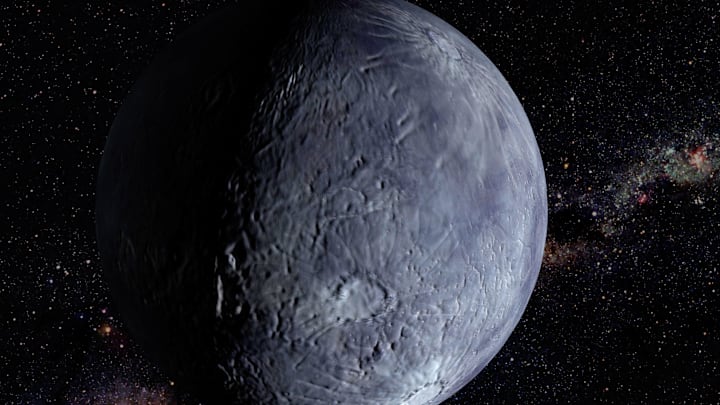The Kuiper Belt and Beyond: Exploring the Edge of the Solar System

The Kuiper Belt, a vast region of space beyond Neptune, is home to a multitude of icy bodies and dwarf planets that offer a glimpse into the early solar system. This distant, enigmatic region extends from about 30 to 55 astronomical units (AU) from the Sun and contains remnants from the solar system's formation. Exploring the Kuiper Belt and the regions beyond it, such as the scattered disk and the Oort Cloud, provides valuable insights into the processes that shaped our cosmic neighborhood and the nature of the outer solar system.
The existence of the Kuiper Belt was first proposed by astronomer Gerard Kuiper in 1951, though the first direct evidence of its objects, known as Kuiper Belt Objects (KBOs), was not found until the 1990s. The discovery of 1992 QB1, the first KBO, confirmed the presence of this distant region and opened a new chapter in our understanding of the solar system's outer reaches. Since then, thousands of KBOs have been discovered, varying in size, composition, and orbit.
One of the most notable discoveries in the Kuiper Belt is the dwarf planet Pluto. Originally classified as the ninth planet, Pluto was redefined as a dwarf planet in 2006 by the International Astronomical Union (IAU). Pluto's orbit is highly eccentric and inclined, and its surface features mountains, plains, and possibly subsurface oceans. The New Horizons mission, which performed a flyby of Pluto in 2015, provided detailed images and data that revealed the complex geology and diverse surface of this distant world.
Pluto is accompanied by several other large KBOs, such as Eris, Haumea, and Makemake, which also hold the status of dwarf planets. Eris, discovered in 2005, is slightly smaller than Pluto but more massive, and its discovery played a key role in the reclassification of Pluto. Haumea is unique for its elongated shape and fast rotation, while Makemake has a bright, icy surface. These dwarf planets, along with many smaller KBOs, offer a window into the conditions and materials present in the early solar system.
Beyond the Kuiper Belt lies the scattered disk, a region populated by icy bodies with highly eccentric and inclined orbits. Objects in the scattered disk, such as the dwarf planet Sedna, are believed to have been gravitationally influenced by Neptune or other massive bodies, leading to their distant and erratic orbits. The scattered disk overlaps with the Kuiper Belt but extends much farther, providing a link between the Kuiper Belt and the even more distant Oort Cloud.
The Oort Cloud, a theoretical cloud of icy bodies, is thought to surround the solar system at distances ranging from about 2,000 to 100,000 AU. Proposed by astronomer Jan Oort in 1950, the Oort Cloud is believed to be the source of long-period comets that occasionally visit the inner solar system. These comets, composed of primordial material, offer clues about the early solar system and the processes that led to its formation. While no direct observations of the Oort Cloud have been made, its existence is inferred from the behavior of long-period comets.
The exploration of the Kuiper Belt and beyond has been greatly enhanced by space missions. The New Horizons mission, after its successful flyby of Pluto, continued its journey to explore other KBOs, including Arrokoth (formerly known as 2014 MU69). The close-up images and data from Arrokoth provided insights into the binary contact structure and composition of this ancient object, offering further evidence of the diversity and complexity of KBOs.
Future missions to the outer solar system aim to continue the exploration of these distant regions. Proposed missions include orbiters and flybys of additional KBOs and dwarf planets, as well as telescopes designed to study the outer solar system from afar. These missions will provide more detailed information about the composition, dynamics, and history of the Kuiper Belt, scattered disk, and Oort Cloud.
In conclusion, the Kuiper Belt and the regions beyond it represent the outer frontier of the solar system, populated by a diverse array of icy bodies and dwarf planets. Exploring these distant regions provides valuable insights into the early solar system and the processes that shaped our cosmic neighborhood. Through space missions and continued observations, scientists are uncovering the mysteries of the Kuiper Belt, scattered disk, and Oort Cloud, deepening our understanding of the outer solar system and its place in the broader context of planetary science and cosmology.